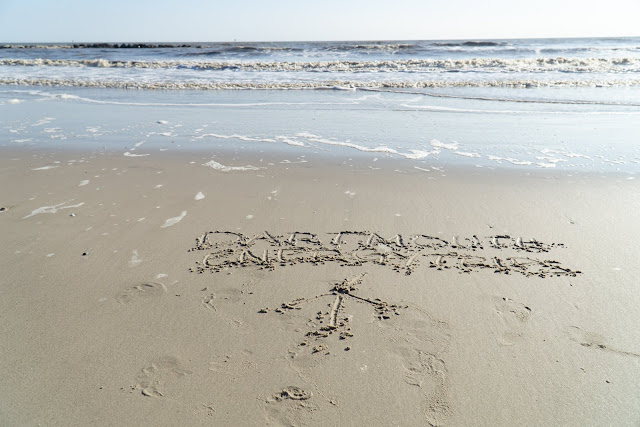FAYETTEVILLE
The seven o’clock breakfast on
this grey morning was the second of many early wake-ups at Mike and Wanda’s
house. We were eager to travel 50 minutes southeast from Montgomery to meet Gabe
Peña, the assistant resource coordinator at the Fayette County Urban Renewal
Authority in Fayetteville, a forepromised liberal bubble in the southern West
Virginia coal country. In anticipation to witnessing Fayetteville’s community
and economic development, we whirled past numerous strips of small towns marked
by local churches and dollar stores.
Our day began with touring the
Canyon Rim Visitor Center, seated in a vantage point of the New River Gorge
Arch Bridge. This impressive steel construction hangs over 800ft above the
river below and holds the one of the largest, annual West Virginian festivals
in October.
The New River Gorge attracts an
increasing amount of tourism, a hopeful economic driver for the region. The Center’s
informational video highlighted the history of the New River from its origins
in coal and lumber to its recreational resources in climbing and kayaking. Soon
after, we spun the minivan (recently dubbed “Mudder Jones”) down the gorge to
see the cliffs and rapids for ourselves.
New River Gorge Arch Bridge over some renowned class 4
rapids
We moved through the next few sites
very quickly. Gene Kistler led us around the Summerlee gob pile to show us the effects
of acid mine drainage in the wolf creek watershed.
Gene gestures to the oranged waters
of the creek bed
In between navigating and pointing
out landmarks, Gabe answered questions about the challenges and blessings of moving
here from Texas: affordable living, food desert, community connection, neglected
school system. We turned off Route 19 right behind a Sunoco gas station to find
a sea of turquoise pipe sections. This pipe pile is one of three storage sites
for an not-yet-approved natural gas pipeline and compressor that would run to
the south but would not serve rural West Virginia.
Our next stop was Mount Hope
which greeted us with an intentional, exposed coal seam in the entrance to town.
Mount Hope’s prime left us with the beautiful, antebellum style brick and stone
buildings, which felt like an uninhabited model town given the dwindling
population of 1,100.
Sarah Carballo
Down the street toward Mount Hope’s town center
Andy Davis, Active Southern West
Virginia’s bike and trail coordinator took us on a walking tour to show us the
vision for how pedestrian and cyclist planning and promoting recreational
exercise can bring more activity into Mount Hope.
This weather
makes a great day for a sidewalk tour
We took a group photo in front of
this shrine for Mount Hope’s miracle “ashless” coal, which depleted in the 50’s
and 60’s.
Sarah Carballo
Gabe then brought us to the edge
of the Whitlock Farm Property, a 62-acre farm now owned by the county’s
Farmland Protection Board. With much insistence that this fertile land can
address food poverty and promote agricultural education, the Urban Renewal
Authority now leases the land and looks forward to creating various
agricultural projects.
Sarah Carballo
Posing in front of the fence to
the expansive Whitlock Farms
For lunch, we dined at Secret
Sandwich Society, a local restaurant in Fayetteville with an endless selection
of loaded sandwiches. Afterwards, we went to the lounge upstairs to meet
Catherine Moore, a writer, contributor to Inside
Appalachia, and curator at the West Virginia Mine Wars Museum. She led us
through the Coal Mine Wars, a history still omitted in some West Virginian history
classes today. The recent teachers’ strike echoed the unionizing established during
the wars by reclaiming the term ‘redneck’ for the red bandana donning miners of
the movement. Catherine hopes that this story of activism, workers’ solidarity,
and fight for justice will emphasize the heritage of West Virginians and its
importance in bridging the rest of the nation’s understanding of this region.
Sarah Carballo
Wanda’s mother shows Catherine
her old family photos which are intertwined with WV’s mining history
Before heading home, we toured around Fayetteville for a little bit.
On our
way back to Montgomery, we drove by the Hawk’s Nest Tunnel site, the location
of one of the greatest industrial disasters in American history. Unprotected workers
died of silicosis due to the inhalation of fine, silica dust particles. Between
1930 and 1935, hundreds of workers died in order to dig the tunnel and harvest
silica.
Right up the road behind Gauley
Bridge was our last stop, the Cathedral Falls. The cascading rush of water
offered such a nice contrast to the grave history of mining across the road.
We were excited to scramble at this local sight before
heading back to Montgomery for the day.
















Comments
Post a Comment